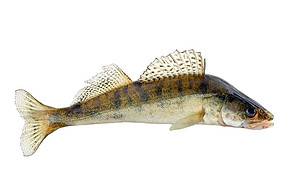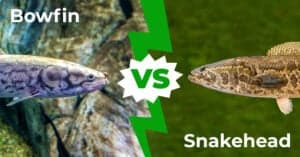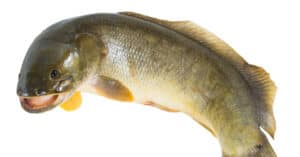Bighead carp are plankton eaters and are devastating competition for native creatures. Because bighead carp grow to such large sizes and are so prolific, they can threaten other fish species by depleting the available resources. But, because of their size and numbers, bighead carp are a popular target for sports fishermen in Tennessee. And while these fish grow to substantial sizes, the largest bighead carp ever caught in Tennessee is astounding.
About Bighead Carp
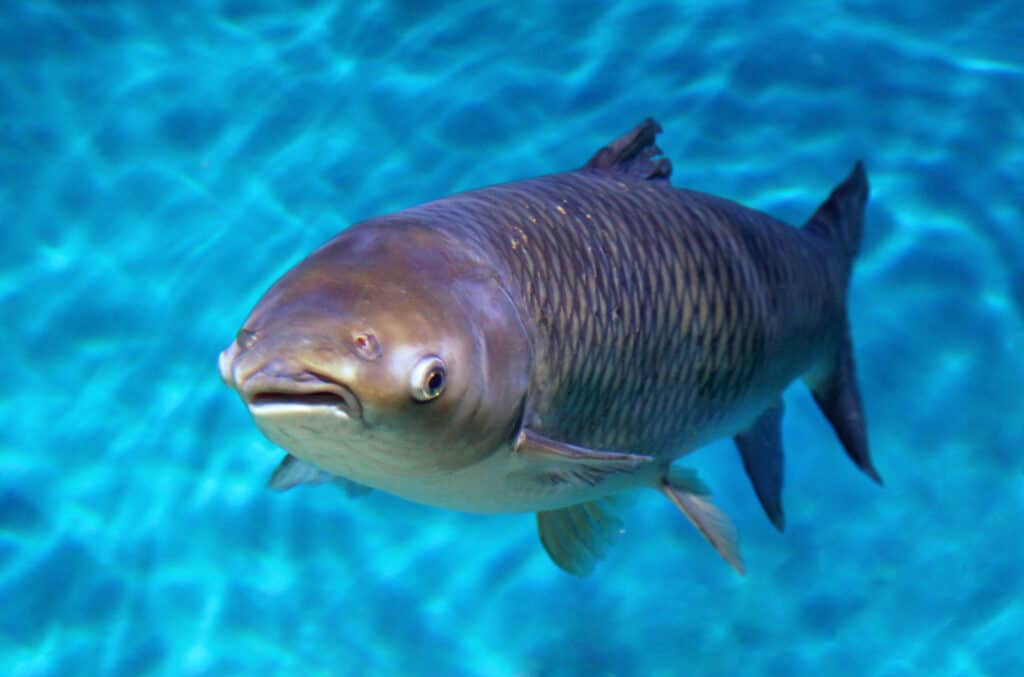
As is typical among bottom feeders, the bighead carp has eyes facing downward.
©Katoosha/Shutterstock.com
When looking for bighead carp, it is helpful to know what they look like, their typical size, and what they like to eat. However, the first thing you will notice about a bighead carp is its size!
Description of Bighead Carp
Bighead carp (Hypophthalmichthys nobilis) is part of the family Cyprinidae that encompasses other game fish like carp, minnows, and shiners. It’s native to East Asia and considered an invasive species. One of the nicknames of bighead carp is “river monsters” because of their size potential and gluttonous eating patterns.
Bighead carp have long, torpedo-shaped bodies. The back of a bighead carp is dark gray, fading to off-white along its belly. Their broad, flattened heads feature low-set eyes that sit below the mouth. And their mouths are quite large and upturned, without barbels or teeth in them.
Typical Bighead Carp Size
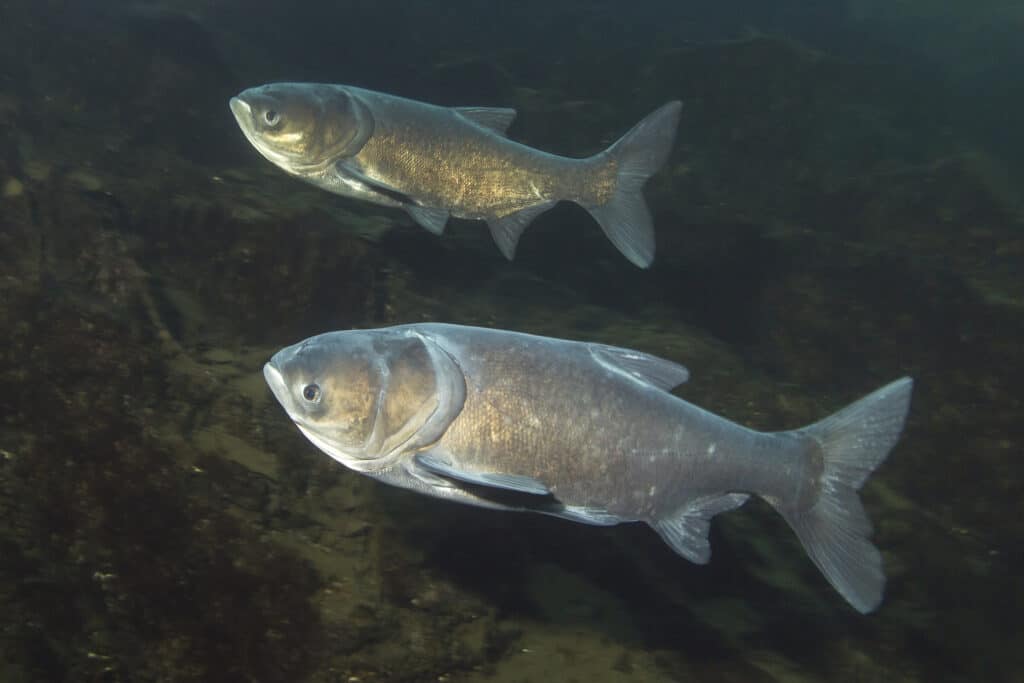
Bighead carp typically travel in schools at a depth of five to sixteen feet.
©Rostislav Stefanek/Shutterstock.com
As mentioned previously, bighead carp grow to be quite large. However, males generally grow larger than females. On average, a mature bighead carp is around three to four feet long. Typically, they will range from 30 to 50 pounds, but some are much larger like the largest bighead carp ever caught in Tennessee.
Diet
These monstrous fish are sustained by zooplankton and, at times, algae. But, if zooplankton is in short supply, bighead carp easily adapt. They are considered opportunistic feeders, eating whatever is available. This adaptation is another reason they are a devastating invasive fish species. When zooplankton is not accessible, they will eat decomposed organic matter and small invertebrates.
Because they do not have true stomachs, bighead carp eat almost continuously. They may consume 20 percent to 120 percent of their body weight daily.
Predators of Bighead Carp
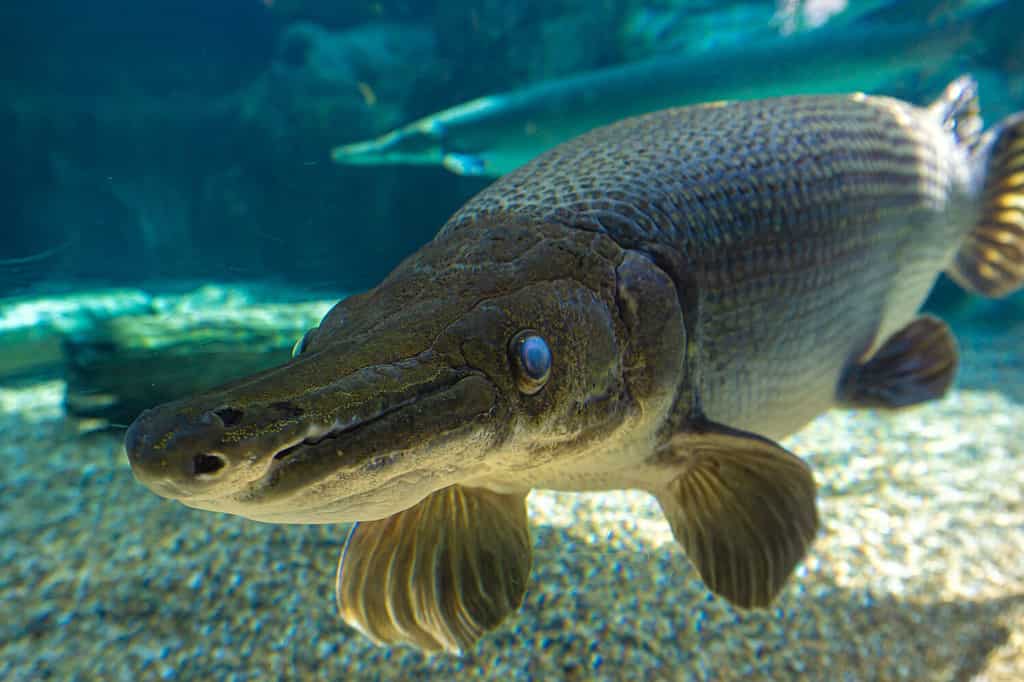
While
alligator
gar may consume juvenile bighead carp, adult bighead carp are too big for alligator gars to eat.
©TKBackyard/Shutterstock.com
The predators of bighead carp are in short supply, which is another reason why the species is so prolific. Some predators include alligator gar, bowfin, and snapping turtles. However, bighead carp grow so fast that they often outpace any potential predator. Humans are predators that bighead carp never outgrow, but even anglers in Tennessee have a difficult time keeping up with the reproduction rates of bighead carp.
Habitat
Native to southern and central China, bighead carp were brought to the United States in 1972. They dwell in freshwater rivers, lakes, and reservoirs. Spots with abundant plankton and slow currents are what bighead carp prefer. They can tolerate water temperatures between 32.9 °F to 100.4 °F.
Introduction to the United States
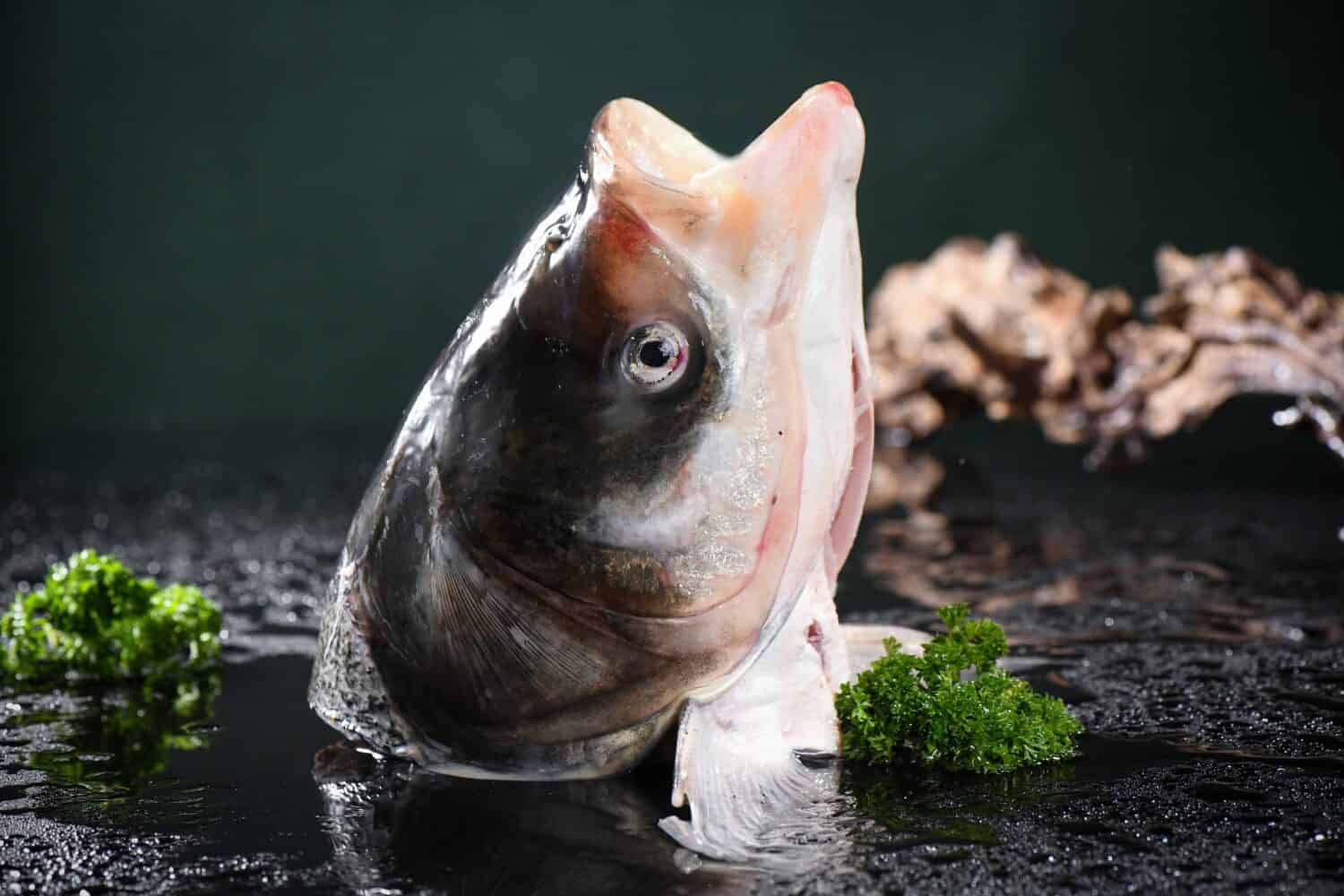
Since 2011, importing bighead carp to the United States has been prohibited since they are considered invasive species.
©xiaoxiao9119/Shutterstock.com
In 1972, a fish farmer in Arkansas imported bighead carp from China for the purpose of algae control and water clarity in his ponds. In the early 1980s, bighead carp were discovered in the Mississippi and Ohio rivers, likely due to escaped fish from the aquaculture facilities. They quickly spread to other rivers in the Mississippi River Basin and have been recorded in at least 18 states.
By 2011, bighead carp made the list of injurious fish put out by the U.S. Fish and Wildlife Service. This means that people are prohibited from importing bighead carp to the United States. Also, transporting bighead carp between states and U.S. territories is prohibited without a permit.
Bighead Carp as an Invasive Species
Bighead carp consume plankton and compete directly with native species that rely on plankton for food. Because of their large sizes and high reproduction rates, bighead carp have been known to deplete plankton, causing reduced populations of native species.
Commercial fishermen hate them because bighead carp can fill nets to the point of breaking. Many fishing sites have been abandoned as a result. Bighead carp can also “pile up” beneath dams causing damage.
In short, high densities, large sizes, and fast growth rates of bighead carp pose a risk of competition for food and space with native fishes.
The Largest Bighead Carp Ever Caught in Tennessee

The Tennessee record for bighead carp is about 35 pounds smaller than the largest bighead carp caught worldwide.
©rarrarorro/Shutterstock.com
Tennessee has some impressive records for carp and other species of fish. But the largest bighead carp ever caught in Tennessee was an impressive 90 pounds! Considering baby hippopotamuses weigh between 50 and 100 pounds, this carp would give the hippo a run for its money. On June 2, 2005, angler Jeffrey J. Rorex caught this behemoth at the Guntersville Reservoir.
Largest Bighead Carp Ever Caught in the World
On July 24, 2021, fisherman Matt Neuling was bow fishing with a friend at Lake Perry in Missouri. The monster fish that Neuling pierced weighed 125 pounds and 5 ounces. Talk about a colossal catch!
The photo featured at the top of this post is © Katoosha/Shutterstock.com
Thank you for reading! Have some feedback for us? Contact the AZ Animals editorial team.




